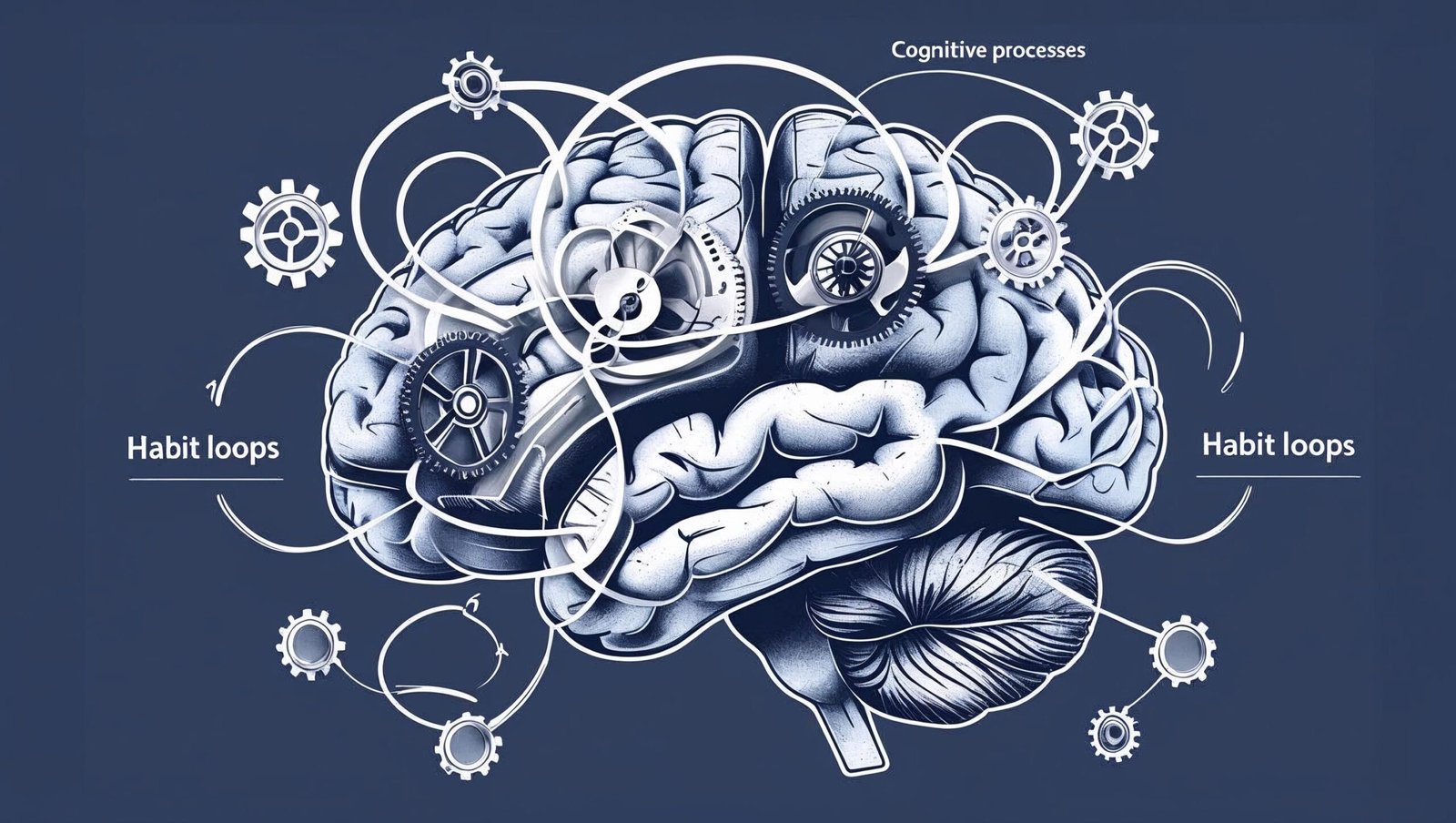Introduction
In the realm of self-development literature, few works have had the transformative impact of Atomic Habits by James Clear. Published in 2018, this best-selling book has become a cornerstone for individuals seeking meaningful and lasting change. The brilliance of the work lies not in its flamboyance but in its simplicity and structured clarity. This detailed review will unpack seven powerful lessons embedded within the pages of Atomic Habits by James Clear and explain how this volume can become your lifelong guide to personal reform.
Introduction to the Core Philosophy
At the heart of Atomic Habits by James Clear lies the fundamental notion that small changes, when compounded, yield powerful outcomes. The book dismantles the often romanticised notion of overnight transformation and instead champions the principle of “marginal gains” — small, consistent improvements that, over time, lead to exponential success.
James Clear’s approach is rooted in psychology, neuroscience, and behavioural science. Unlike the hollow optimism found in many motivational texts, Atomic Habits by James Clear is an empirical manual. It is structured, pragmatic, and immediately applicable, which makes it ideal for both beginners and seasoned self-improvers.

Lesson 1: Identity-Based Habits Trump Outcome-Based Goals
The first transformational idea in Atomic Habits by James Clear is the shift from outcome-based habits to identity-based habits. Clear explains that people often focus on what they want to achieve — lose weight, write a book, run a marathon — rather than who they want to become.
“The goal is not to read a book, the goal is to become a reader.”
This concept reshapes your mindset. When habits are built around your identity rather than mere goals, they tend to stick. You no longer run because you want to lose weight; you run because you’re a runner. This internal shift redefines consistency and integrity.
Lesson 2: The Habit Loop — Cue, Craving, Response, Reward
A key framework in Atomic Habits by James Clear is the habit loop, which includes four stages: cue, craving, response, and reward. Clear masterfully breaks down these four stages to explain how habits are formed and reinforced.
Each element plays a critical role. The cue triggers the brain, the craving provides motivation, the response is the actual behaviour, and the reward is the end goal. Once this loop becomes automatic, the habit becomes a permanent fixture of your life.
In practical terms, if you want to build a reading habit, place a book next to your pillow (cue), imagine the satisfaction of reading (craving), read for 10 minutes (response), and enjoy the feeling of accomplishment (reward). Through Atomic Habits by James Clear, this loop becomes your weapon of habit reformation.
Lesson 3: Make It Obvious, Attractive, Easy, and Satisfying
James Clear introduces the Four Laws of Behaviour Change which correspond to the four stages of the habit loop:
-
Make it Obvious (Cue)
-
Make it Attractive (Craving)
-
Make it Easy (Response)
-
Make it Satisfying (Reward)
These four laws act as levers to encourage good habits and discourage bad ones. Let’s illustrate this with the habit of drinking more water:
-
Leave a water bottle on your desk (Obvious)
-
Add lemon or mint (Attractive)
-
Use a marked bottle to track intake (Easy)
-
Tick off daily water intake on a habit tracker (Satisfying)
This actionable strategy is one of the most celebrated features of Atomic Habits by James Clear.
Lesson 4: Environment Design Is More Powerful Than Motivation
Contrary to popular belief, Atomic Habits by James Clear suggests that willpower and motivation are unreliable. Instead, your environment plays a decisive role in habit formation.
If you want to eat healthy, keep fruits on the table and hide junk food. If you wish to exercise in the morning, sleep in your workout clothes. These micro-adjustments nudge you toward better behaviours by removing friction.
Clear states, “Environment is the invisible hand that shapes human behavior.” This insight from Atomic Habits by James Clear reinforces that change is not just internal — it is deeply contextual.

Lesson 5: Focus on Systems, Not Goals
In a world obsessed with goal-setting, Atomic Habits by James Clear dares to say: forget goals, build systems. Goals are results; systems are the processes that lead to those results. While goals are momentary, systems are enduring.
A writer’s goal might be to publish a novel. The system is writing 500 words daily. A runner’s goal may be to complete a marathon; the system is running four times a week. By prioritising systems, you remove the pressure of success and embrace the beauty of process.
This lesson from Atomic Habits by James Clear fundamentally alters how we view progress — not as a final destination, but as a direction.
Lesson 6: The Power of the 1% Rule
The “1% Better Every Day” principle is the heartbeat of Atomic Habits by James Clear. Small improvements, done consistently, are more effective than grand gestures done occasionally.
Clear uses the example of the British Cycling Team. By improving every aspect of performance by just 1%, they went from mediocrity to global dominance. This principle extends to personal life, too. Read one extra page. Sleep 10 minutes earlier. Smile more. These micro-wins, compounded, result in massive gains.
According to Atomic Habits by James Clear, “Success is the product of daily habits—not once-in-a-lifetime transformations.”
Lesson 7: Track, Reflect, and Never Miss Twice
One of the final but essential insights from Atomic Habits by James Clear is the importance of habit tracking and recovery. People often abandon progress due to minor failures. Clear’s philosophy encourages compassion and consistency.
Missing a workout doesn’t make you unhealthy — quitting does. The “never miss twice” rule ensures resilience. It permits imperfection while promoting accountability. Journaling, habit apps, or even a simple checklist can keep you aligned.
By making your progress visible, Atomic Habits by James Clear teaches you to celebrate consistency and recognise your effort.
The Psychological Roots of Habit Formation
The mechanics of routine behaviours are deeply rooted in human psychology. Cognitive science reveals that actions are often dictated by subconscious programming rather than conscious decisions. This is why breaking undesirable patterns feels like swimming against a current.
Routine behaviours emerge due to neural pathways strengthened over time. Each repetition reinforces the connection until the action becomes second nature. For example, checking your phone the moment you wake up is not a conscious choice but a learned response to a consistent cue. The deeper understanding of this process can empower individuals to rewrite their behavioural scripts.
Moreover, when individuals realise that automatic actions govern much of their day, they begin to appreciate the necessity of deliberate change. Awareness becomes the first step toward transformation. Recognising these invisible forces allows one to respond rather than react, initiating a chain of conscious decisions.

How the Brain Rewards Repetition
Behavioural reinforcement is fundamental to neuroscience. The brain releases dopamine when an action is perceived as rewarding, encouraging repetition. This response can be harnessed to build positive rituals.
By celebrating small victories—completing a morning run, choosing a healthy meal, or journaling—one taps into this natural reward circuitry. Over time, even mundane tasks can become enjoyable simply because they are associated with satisfaction.
This approach emphasises that transformation isn’t only about discipline but also about chemistry. If one can engineer the brain to anticipate pleasure from positive actions, consistency becomes more sustainable. Therefore, embedding joy within repetitive behaviour is not just psychological advice—it is a neurological strategy.
The Role of Self-Awareness in Personal Development
Change begins with reflection. Without understanding what triggers undesirable behaviours, any attempt at improvement may remain superficial. Mindfulness, journaling, and introspection serve as tools to decode the hidden patterns that influence choices.
One effective method is tracking behaviours for a week. This allows individuals to identify patterns they were previously blind to—midnight snacking, skipping workouts on weekends, or procrastinating after lunch. Once awareness is gained, intervention becomes possible.
Self-awareness also builds emotional intelligence. It equips individuals to manage impulses, reduce guilt associated with failures, and develop compassion toward themselves. When applied consistently, this internal clarity cultivates resilience and long-term growth.
The Myth of Overnight Success
In a world driven by viral moments and instant gratification, it is tempting to believe that significant achievements occur spontaneously. However, true mastery is often the result of years of invisible effort.
The story of the bamboo tree illustrates this well. For years, it shows no visible growth while its roots develop underground. Then, in a span of weeks, it shoots up dramatically. This metaphor underscores a truth: sustainable change often precedes visible outcomes.
Patience becomes a virtue in such a paradigm. Individuals must learn to delay gratification and trust the process. By honouring the journey over immediate results, a deeper, more enduring transformation is achieved.
Success as a Side Effect of Discipline
Achievement is often misunderstood as the product of talent or luck. In reality, it is a byproduct of showing up consistently—regardless of motivation, mood, or circumstances. This steadfastness defines high performers across fields.
Consider elite athletes, authors, or entrepreneurs. Their accomplishments rarely arise from bursts of inspiration. Instead, they emerge from rituals, accountability, and a commitment to small actions done daily. Discipline becomes the great equaliser, bridging the gap between potential and results.
By reframing self-discipline as an act of self-respect rather than restriction, individuals develop a healthier relationship with it. It no longer feels like punishment, but an act of alignment with their higher self.

How Environment Shapes Behaviour Subtly
The influence of surroundings on behaviour cannot be overstated. From lighting and noise to layout and accessibility, one’s setting subtly nudges decisions. Creating a supportive physical and digital space can significantly elevate productivity and focus.
For instance, working in a clutter-free area naturally reduces distractions. Having nutritious food visible on the kitchen counter increases the likelihood of making healthy choices. Removing social media apps from a smartphone often curbs mindless scrolling.
Changing environments is often easier than changing minds. By altering surroundings, one silently programs better decisions without relying on willpower. Over time, the space begins to work for you rather than against you.
Social Influence and the Imitation Instinct
Humans are inherently tribal. Behaviour is frequently guided by what is accepted, applauded, or expected in one’s social circle. Surrounding oneself with positive influences can have an exponential impact on transformation.
This explains why workout groups, study clubs, or entrepreneurial communities are so effective. They offer not just accountability but also aspirational mirroring. When we observe those we admire embracing growth, we subconsciously adopt similar habits.
Therefore, auditing one’s social environment becomes as essential as changing physical spaces. By aligning with people who represent the kind of person you aspire to be, your own evolution accelerates.
Keystone Practices That Unlock Momentum
Some behaviours, once adopted, naturally trigger a cascade of other positive actions. These are known as keystone routines. Identifying and cultivating such habits can create a ripple effect across various areas of life.
For instance, waking up early often leads to better planning, increased productivity, and improved emotional balance. Regular exercise improves sleep, mood, and dietary decisions. Reading daily expands knowledge, sharpens focus, and improves empathy.
Rather than overhauling every aspect of life, individuals can focus on a few high-leverage routines that act as catalysts. The rest tends to follow organically once momentum is established.
Time as an Amplifier of Choices
Every decision compounds over time. Choices may seem inconsequential in the short run, but they build trajectories in the long run. What appears as an insignificant indulgence or discipline today may define who you become in five years.
Consider the analogy of an airplane. A minor course correction early in the journey can result in an entirely different destination. Similarly, shifting daily behaviour by just a degree, repeated consistently, rewires identity and reshapes outcomes.
This time-centric lens reframes the present. Every moment becomes an investment. Every repetition becomes a vote for the person you aim to become. This understanding instils both urgency and hope.
Why Measuring Progress Matters
Change that cannot be tracked is rarely sustained. Quantifying advancement gives clarity, motivation, and a sense of achievement. This is why athletes use timers, writers use word counts, and entrepreneurs rely on metrics.
However, measuring doesn’t always require sophisticated tools. Even a simple notebook or calendar can be powerful. Recording progress allows individuals to witness their own growth, reinforcing the cycle of commitment.
Additionally, tracking exposes patterns of inconsistency or regression. This self-diagnostic tool becomes a mirror—revealing what works, what doesn’t, and where to adjust. In this way, progress becomes visible, and motivation becomes tangible.
Letting Go of Perfectionism
One of the greatest obstacles to consistent behaviour is the all-or-nothing mindset. The belief that if something cannot be done perfectly, it isn’t worth doing at all is both common and destructive.
Perfectionism breeds procrastination, stress, and ultimately abandonment. The antidote is embracing progress over flawlessness. Showing up imperfectly is always better than not showing up at all.
This mindset shift is liberating. It creates space for experimentation, grace, and resilience. When individuals release the pressure to be flawless, they become more consistent, adaptive, and emotionally balanced.

Why Legacy Is Built on Daily Effort
Great accomplishments, whether in art, leadership, or innovation, are rarely the result of singular moments. They are the cumulative output of countless unseen hours of work, reflection, and sacrifice.
The statues we admire, the books we cherish, the companies we respect—each is the result of thousands of tiny, often unnoticed actions. This truth reframes legacy not as an end goal but as a daily commitment.
Every day becomes an opportunity to contribute to that narrative. By acting with intention, kindness, and excellence, we write chapters in the story we wish to leave behind.
Why Atomic Habits by James Clear Stands Out
There are thousands of books in the self-help genre. What makes Atomic Habits by James Clear unique is its science-backed approach, actionable insights, and deep psychological understanding.
-
It avoids fluff and platitudes.
-
Every chapter ends with a summary, aiding retention.
-
It provides a universal framework, suitable for anyone regardless of profession or background.
Whether you’re a student, entrepreneur, athlete, or homemaker, the lessons from Atomic Habits by James Clear can enhance your life.
Conclusion: Tiny Changes, Remarkable Results
The central message of Atomic Habits by James Clear is both liberating and empowering: You don’t rise to the level of your goals; you fall to the level of your systems.
Instead of trying to change your life overnight, commit to daily 1% improvements. Modify your environment. Redefine your identity. Measure your wins. Stick to the process. And above all, be patient.
Atomic Habits by James Clear is more than just a book. It is a blueprint for lasting change — a companion for life’s long journey. If you apply even half the insights from this book, you will see a transformative shift in your routines, mindset, and identity.
FAQs about Atomic Habits by James Clear
Q1. What is the central idea of Atomic Habits by James Clear?
The book emphasises that small, consistent changes (atomic habits) lead to significant life improvements over time through the compounding effect.
Q2. Is Atomic Habits by James Clear based on scientific research?
Yes, the book draws from behavioural psychology, neuroscience, and real-life case studies to explain habit formation and change.
Q3. Who should read Atomic Habits by James Clear?
Anyone looking to improve their personal or professional life, build good habits, or eliminate bad ones will benefit from the book.
Q4. What makes Atomic Habits by James Clear different from other self-help books?
Its structured framework, practical tips, and focus on systems over goals set it apart. It’s both inspirational and actionable.
Q5. How long does it take to see results from applying Atomic Habits by James Clear?
Results vary, but consistent application of even one principle (like habit stacking or environment design) often yields noticeable results within weeks.
Read more transformative book reviews on shubhanshuinsights.com
Comment your favourite lesson from Atomic Habits by James Clear below and share how it has impacted your life.
💬 Sample Powerful Comments Section for Blog Engagement
🔹 “This is by far the most in-depth review I’ve read. I feel motivated to pick the book up again and re-read it with a fresh perspective. Thank you!”
🔹 “Brilliantly explained! The breakdown of each lesson from Atomic Habits by James Clear makes this review a treasure trove for habit builders.”
🔹 “I had read the book last year, but this blog post helped me understand it better than before. Every point is backed by real insight.”